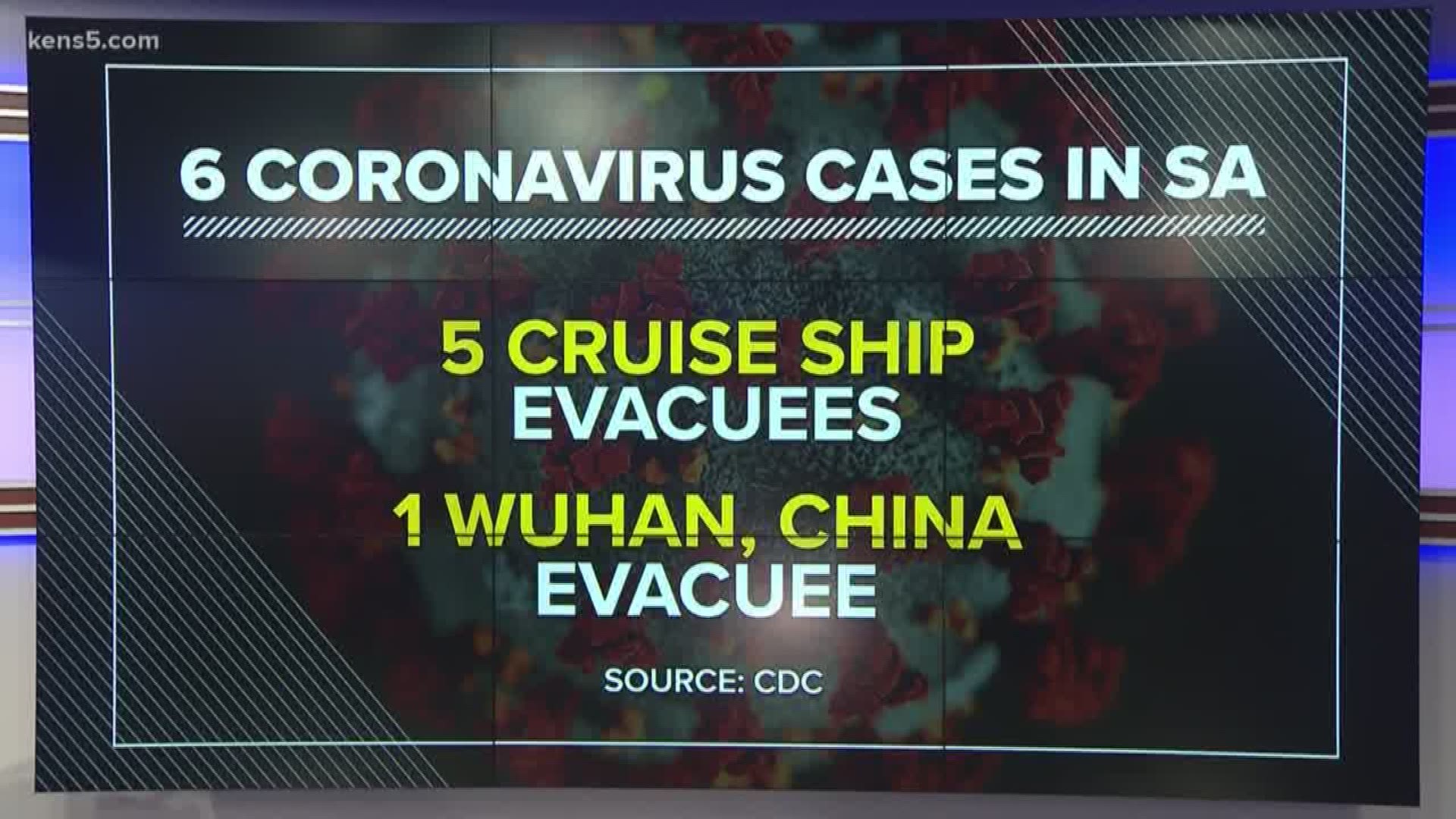SAN ANTONIO — The Centers for Disease Control and Prevention has confirmed new cases of coronavirus disease (COVID-19) in San Antonio.
The people affected are among the group of Diamond Princess cruise ship passengers currently under federal quarantine at Joint Base San Antonio-Lackland.
The CDC said in a press conference Monday afternoon that five of the passengers from the ship tested positive for coronavirus. The patients who test positive are being taken to the Texas Center for Infectious Disease for further evaluation.
The CDC says four other passengers are suspected of having coronavirus and are awaiting test results. The CDC says they are not sure when those test results would be back but said they would not be surprised if they had more positive cases.
"Given the high-risk environment the Diamond Princess Cruise ship passengers came from I would not be surprised if we have additional cases," Rear Admiral Nancy Knight, MD with the Center for Disease Control said. "That's why they're here. That's why they're in quarantine."
The current total number of coronavirus cases in San Antonio is now six, including the patient previously under federal quarantine at JBSA-Lackland.
That patient was among the group that was brought to San Antonio on Feb. 6. Their quarantine was lifted on Feb. 20.
Officials also said one of the evacuees under quarantine in California is being transferred to San Antonio but a positive patient currently in San Antonio would be transferring to another facility to be closer to family members.
The CDC said given the average age of the cruise ship was much older they are monitoring these individuals closely. Despite all of that, city leaders say the public remains at low risk.
"Let's be clear, the most dangerous, damaging infectious disease is hysteria," Mayor Ron Nirenberg said at the news conference on Monday.
"What we're trying to do is make sure we have a compassionate human response to a crisis that's happening, that we do so all while maintaining the safety of the public."
The cruise ship passengers currently at Lackland Air Force Base will be done with their mandated quarantine period, March 2.
We reached out to the CDC with a list of questions. Here's how they responded:
Q: What is the CDC’s recommended criteria for a Patient Under Investigation for COVID-19.
You can find detailed information about our criteria here.
Q: Who’s assessing the people in quarantine? How often and what’s the procedure?
CDC staff are checking temperatures twice daily and monitoring the evacuees for any symptoms compatible with COVID-19. Anyone who shows signs of illness will be transported to an area medical facility for isolation, evaluation, and care as needed.
Q: Do you have a breakdown of the of the people evacuated from the cruise ship: how many came to San Antonio? Of them – how many are showing symptoms, how many are not. What states are they from? A breakdown by state.
Of the 329 American citizens on the Diamond Princess cruise ship returned by flights chartered by the State Department on Feb. 16, 144 were sent to Joint Base San Antonio-Lackland. Of that group, 10 are currently hospitalized locally. To ensure security and confidentiality, we won’t share further information on the patients.
Q: Our viewers are telling us they are concerned that the quarantine is taking place in Texas, one of the more populated states. Why not take “them” somewhere where fewer people could be infected?
JBSA-Lackland was identified by the Department of Defense as one of several military installations that could house quarantined travelers returning to the United States. Each installation pairs with one of the 11 airports – Dallas-Fort Worth International Airport included – where flights from China have been directed to land because of the coronavirus outbreak. It’s also important to note that Texas has a strong public health infrastructure in place, with world-class medical care facilities, and their ability to detect and confirm this virus is critical. We appreciate the dedication and cooperation the state, local, and territorial health departments have shown in the last two months as we learn more about this emerging threat.
Q: There’s evidence the quarantine is working the way it should. Who/what do you credit for that?
The U.S. public health system relies heavily on the work of state, local and territorial health departments who are on the front lines of outbreak responses. From local public health and EMS to area clinicians and nurses, this has been a multi-layered, cross-agency public health response – and we have benefited from the collaborative power of these partners. We appreciate the dedication and cooperation that San Antonio has provided in recent weeks to ensure these evacuees have been appropriately cared for, while also protecting the health of their local community.
Q: How do you prevent someone in quarantine from getting sick from a carrier who they’re traveling with?
The virus that causes COVID-19 is spreading from person to person. Someone who is actively sick with COVID-19 can spread the illness to others. That is why CDC has been recommending such aggressive infection prevention and control measures, including isolation and social distancing to keep from being exposed to others during quarantine.
The CDC also says:
"People may be worried or anxious, and that can lead to stigma. Stigma hurts everyone by creating more fear or anger towards ordinary people instead of the disease that is causing the problem.
But if they keep in mind the main way COVID-19 spreads, through respiratory droplets when an infected person coughs or sneezes, people who are worried about this and other respiratory illnesses can take everyday actions to help stop the spread of germs.
They can do things such as wash their hands often, avoid touching their face with unwashed hands, avoid close contact with people who appear sick, and frequently clean surfaces that people touch."

